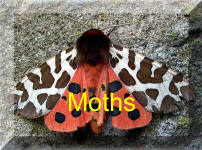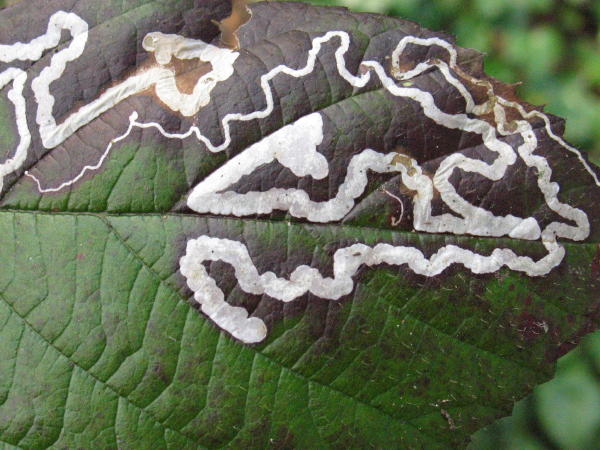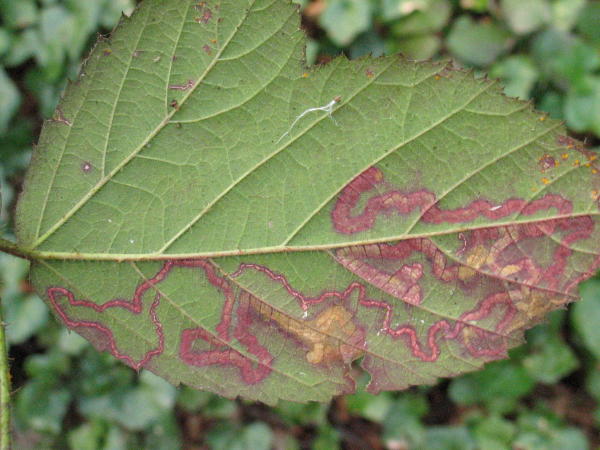Wingspan 6-7 mm.Months seen: May to September.
Habitat: Hedgerows and bramble thickets
Food: The larvae eat bramble leaves.
The large group of moths known as the Nepticulidae The family consists of some 70 species in Britain. are all very tiny, and because of the way their larvae feed internally on leaves, they are known as leaf-miners. The shape of the pale gallery or blotch created by the larva as it feeds is usually a better means of identification than comparing the adult moths.
The foodplant is bramble (Rubus), and the adults, with a wingspan of only 6mm, have a metallic sheen and fly in May and later in the summer.
This moth is one of the most ubiquitous moths in Britain and its whitish mines are a familiar sight on bramble leaves everywhere.
Most of them belong to just one genus: Stigmella. Most Stigmella are brown micro moths. The wings usually have a white band running over it, or one or more white spots. The wingspan varies from 4 to 10 mm, meaning that when resting on a leaf they measure about 2 to 5 mm in length. So it is very hard indeed to discover them at all. . That's due to the larvae of most species mining leaves. This means they are small enough to live within a leaf. The animals crawl forward eating the inside of the leaf. By doing so they leave behind a trail, which can be seen from the outside easily. Such trails are called mines. By studying the mines we are often able to tell which species produced it, for each species leaves behind a characteristic mine. It is essential though to know the species of plant the leaf has been taken from. In this way we don't have to find the animals themselves, which would be a tedious task, to know they are there. This method of studying the circumstancial evidence rather then the animal itself is not uncommon in biology. Galle apples, caused by tiny wasps or flies, are a good exemple of this. Prints of paws in sand or snow give away many nocturnal mammals. And so does examining the contents of the balls spitted out by owls containing hairs and bones of mice and other small creatures they feed on. In the picture you see the leaf of a bramble and in it the clear mine of one of the Stigmella species. Most probably this one has been made by Stigmella aurella, a tiny moth having a wingspan of no more than 5 mm. However the mines left by Stigmella splendidissimella in bramble leaves are almost identical, so it could be this species
12653 Images Copyright Colin duke 2007 All Rights Reserved
12652 Images Copyright Colin duke 2007 All Rights Reserved
Special features: The serpentine shaped tunnel just under the surface of this blackberry leaf (above) was excavated by the larvae of a tiny moth. The larvae spends the winter in the mine, and then comes out of the leaf to pupate. The adult moth is brown in colour with a bright yellow-green band running horizontally across each wing.
Sometimes you'll find a holly leaf with a large tear in the middle of the leaf. This is where a blue tit has pecked into the leaf and eaten the developing larvae.



